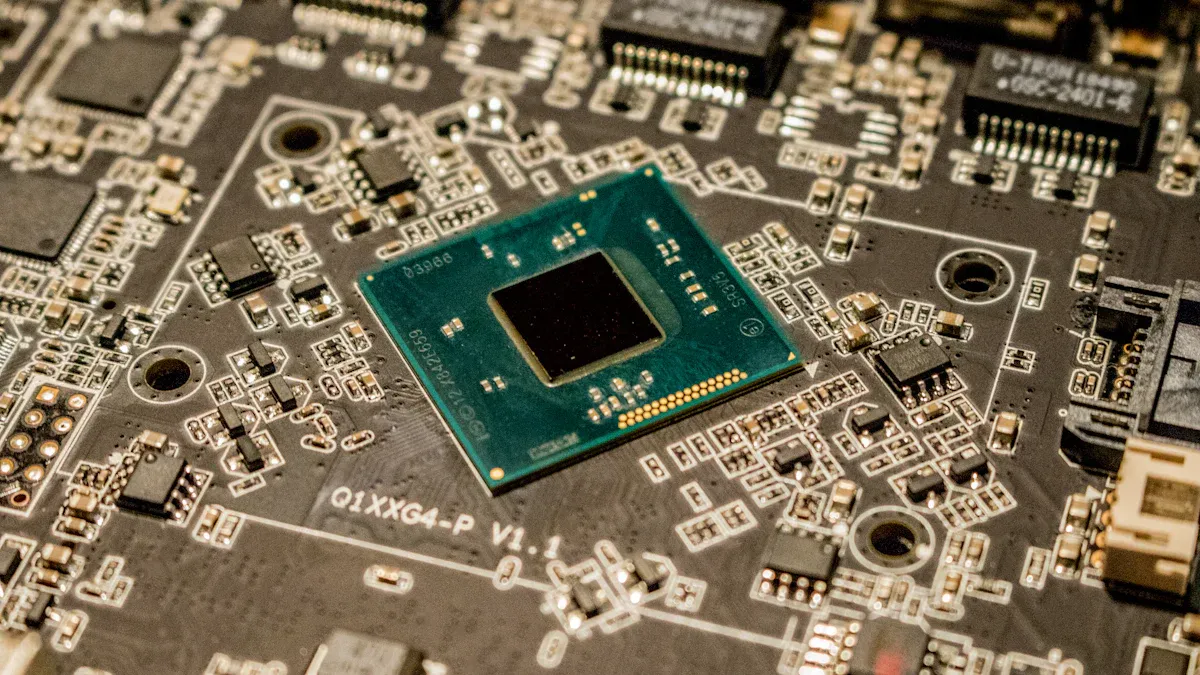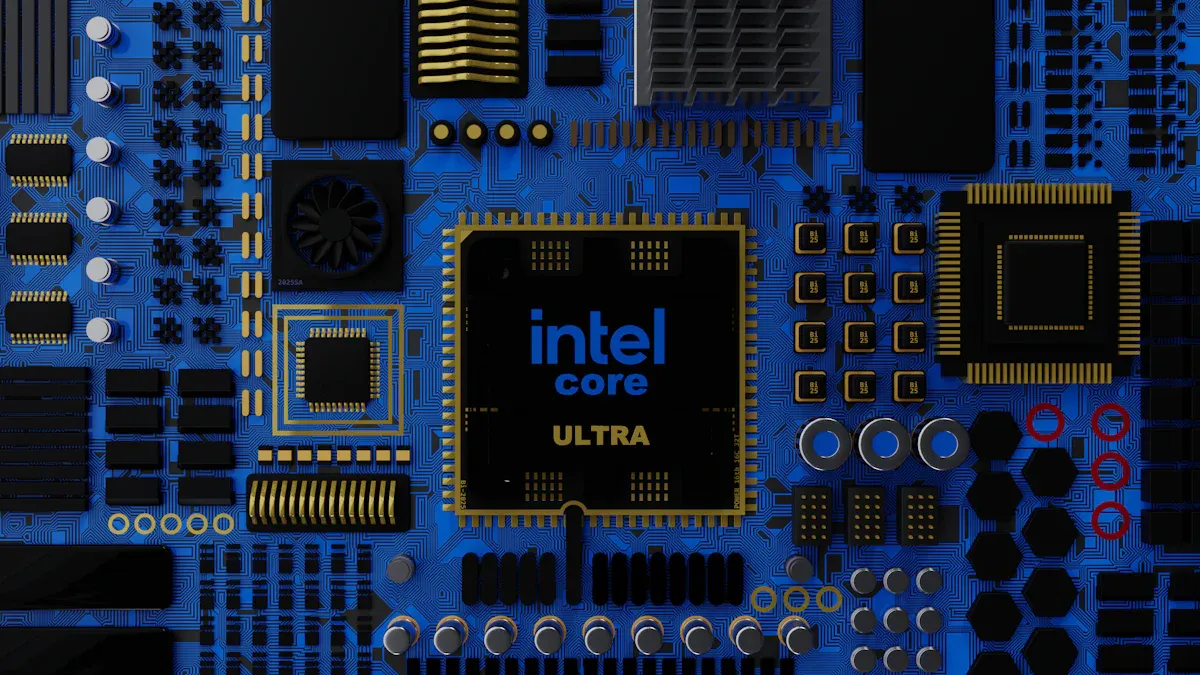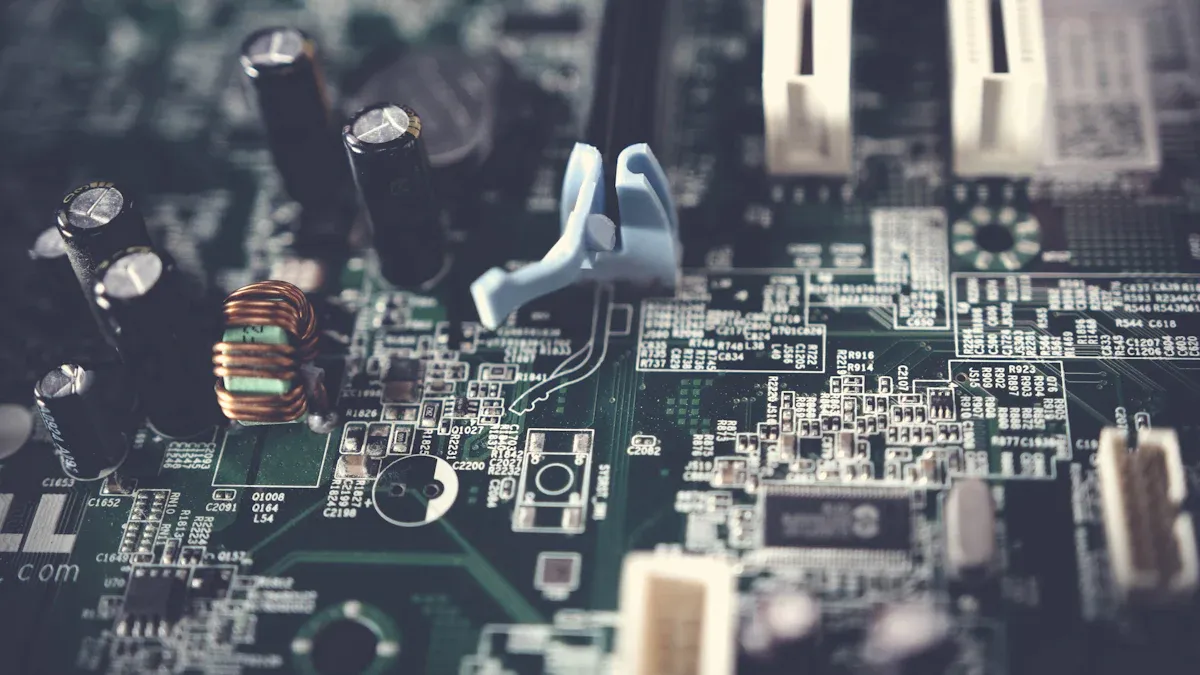
- Graphite semiconductor materials offer high purity and excellent stability.
- Manufacturers use these materials to avoid contamination during production.
- Their unique properties help create reliable chips.
Graphite’s strong resistance to heat and chemicals lets factories meet strict quality standards every day.
Key Takeaways
- Graphite materials keep semiconductor production clean and pure, reducing defects and contamination.
- Graphite parts resist high heat and chemicals, helping factories maintain quality and durability.
- Using graphite improves chip reliability and performance, supporting better electronics and longer device life.
Why Graphite Semiconductor Materials Are Essential for Quality

Unique Physical and Chemical Properties
Graphite semiconductor materials show special physical and chemical traits. These materials have a layered structure. Each layer contains carbon atoms arranged in a hexagonal pattern. This structure gives graphite high strength and flexibility. It also allows easy movement of heat and electricity. Factories use these properties to make sure their equipment works well during chip production.
Note: The layered design of graphite helps it resist wear and tear. This means tools made from graphite last longer and keep working smoothly.
High Purity and Low Contamination Risk
Semiconductor manufacturing needs very clean materials. Even a tiny bit of dirt or metal can ruin a chip. Graphite semiconductor components offer high purity. They do not react with most chemicals. This keeps the process clean and safe for the chips. Workers trust graphite because it does not add unwanted elements to the wafers.
- High purity means fewer defects in finished chips.
- Low contamination risk leads to better product quality.
- Clean materials help companies meet strict industry rules.
Resistance to Extreme Temperatures and Corrosive Environments
Factories often use high heat and strong chemicals to make semiconductors. Many materials break down under these conditions. Graphite semiconductor parts can handle very high temperatures. They do not melt or lose shape easily. They also resist damage from acids and other harsh chemicals.
| Property | Benefit in Manufacturing |
|---|---|
| High melting point | Works well in hot furnaces |
| Chemical resistance | Lasts longer in harsh settings |
| Stable structure | Keeps shape during tough steps |
These features help factories keep their tools working longer. They also make sure each chip meets quality standards.
Applications of Graphite Semiconductor Components in Manufacturing

High-Temperature Furnaces and Heating Elements
Factories use high-temperature furnaces to make semiconductor wafers. These furnaces must reach very high heat levels. Graphite semiconductor materials work well in these settings. They can handle extreme temperatures without melting or breaking. Workers often use graphite rods and plates as heating elements. These parts heat up quickly and spread heat evenly. This helps keep the temperature steady during wafer production.
Tip: Even heat distribution helps prevent defects in the wafers.
Graphite Molds, Crucibles, and Susceptors
Manufacturers shape and process materials using molds and crucibles. Graphite molds keep their shape even when exposed to high heat. This makes them perfect for forming silicon ingots and other parts. Crucibles made from graphite semiconductor materials hold melted silicon safely. They do not react with the silicon, so the final product stays pure.
Susceptors are special holders that absorb heat and transfer it to the wafers. Graphite susceptor parts help control the temperature during crystal growth. This control leads to better quality and fewer defects.
- Graphite molds create smooth surfaces on silicon parts.
- Crucibles protect melted materials from contamination.
- Susceptors help manage heat flow during key steps.
Etching, Ion Implantation, and Doping Processes
Etching, ion implantation, and doping are important steps in making chips. These processes use strong chemicals and high-energy particles. Graphite semiconductor components resist damage from these harsh conditions. They do not add unwanted elements to the wafers. This keeps the chips clean and reliable.
Workers use graphite parts as shields and holders during these steps. These parts last longer than many other materials. They also help keep the process safe and stable.
Heat Management and Thermal Control
Semiconductor devices need careful heat management. Too much heat can damage chips. Graphite semiconductor materials move heat away from sensitive areas. They act as heat spreaders and coolers in many machines.
A table shows how graphite helps with heat control:
| Application | Benefit of Graphite Use |
|---|---|
| Heat spreaders | Moves heat away quickly |
| Cooling plates | Keeps machines at safe temps |
| Thermal shields | Protects parts from hot spots |
Good thermal control helps chips work better and last longer. Factories trust graphite to keep their equipment cool and safe.
Advantages, Challenges, and Innovations in Graphite Semiconductor Use
Ensuring Consistency and Purity in Production
Factories depend on graphite semiconductor materials to keep their processes clean and steady. These materials help workers avoid unwanted particles during chip making. Many companies use strict checks to make sure every batch of graphite meets high purity standards. This careful approach leads to fewer defects and more reliable chips.
Note: Consistent quality in graphite parts means each chip can meet the same high standards every time.
Enhancing Product Reliability and Performance
Graphite parts help chips last longer and work better. Their strong structure resists damage from heat and chemicals. This means machines can run for longer periods without stopping for repairs. Many engineers choose graphite because it helps devices handle tough conditions. Reliable chips lead to better phones, computers, and other electronics.
A table shows how graphite helps improve performance:
| Feature | Benefit for Devices |
|---|---|
| Resistencia al calor | Chips stay cool |
| Estabilidad química | Menos desgloses |
| Long lifespan | Less maintenance needed |
Addressing Limitations and Ongoing Improvements
Some challenges still exist with graphite semiconductor use. For example, graphite can wear down over time or react with certain rare chemicals. Researchers work to make new types of graphite that last even longer. They also look for ways to recycle old graphite parts. These efforts help factories keep up with new technology and stricter rules.
Tip: Ongoing research brings better graphite materials to the market each year.
Graphite plays a vital role in semiconductor manufacturing. Its unique properties help factories produce pure and reliable chips. Many companies depend on graphite to meet strict quality standards. Ongoing research brings new improvements. These advances help the industry create better and more consistent products.
FAQ
What makes graphite better than other materials in semiconductor manufacturing?
Graphite offers high purity and strong resistance to heat and chemicals. These qualities help factories produce cleaner, more reliable chips.
Can graphite parts be recycled after use?
Many factories recycle graphite parts. Recycling helps lower costs and reduces waste in semiconductor production.
Does graphite ever cause contamination in chip making?
Graphite rarely causes contamination. Manufacturers use high-purity graphite to keep chips clean and meet strict industry standards.


